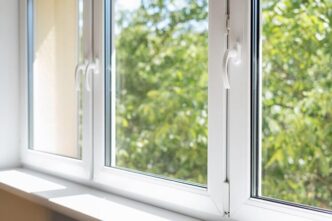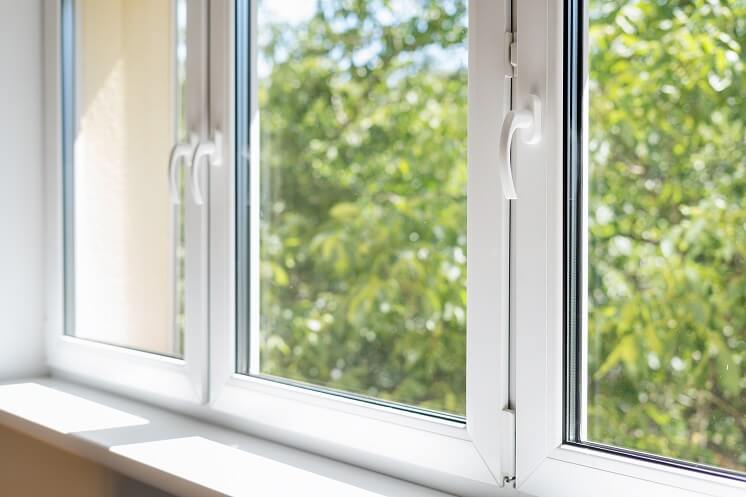Introduction
What Is Double Glazing?
Double glazing is a window construction method that involves two glass panes separated by a space usually filled with air or gas to improve thermal insulation. It’s a common feature in modern homes and offices for better energy performance and comfort.
Why Double Glazing Is Popular for Modern Homes
The benefits of double glazing are plenty: better temperature regulation, reduced energy bills, and a quieter indoor environment. But when that space between the panes is filled with argon gas, those benefits reach a whole new level.
Understanding Argon Gas
What Is Argon Gas?
Argon is a colorless, odorless, non-toxic noble gas that makes up about 1% of the Earth’s atmosphere. It’s chemically inert, which means it doesn’t react with other materials—making it perfect for use in sealed window units.
Why Use Argon Gas in Windows?
Because argon is denser than air, it slows down heat transfer. When Argon Gas Usage in Double Glazing, it creates a powerful thermal barrier that improves energy efficiency and home comfort.
How Argon Compares to Other Gases Like Krypton or Xenon
Krypton and xenon gases are also used in high-performance windows, but they’re more expensive and often reserved for premium or specialty applications. Argon offers a solid balance of performance and affordability for most homes.
Key Benefits of Argon Gas in Double Glazing
Superior Insulation Performance
Argon’s low thermal conductivity means your home stays warmer in winter and cooler in summer. This helps reduce reliance on heating and cooling systems.
Reduced Heat Loss in Winter
With argon-filled double glazing, heat loss is significantly reduced. This translates to warmer indoor environments, especially in colder climates.
Improved Energy Efficiency
By minimizing heat transfer, argon gas helps reduce the amount of energy needed to maintain a comfortable indoor temperature—ultimately lowering your utility bills.
Noise Reduction Benefits
While it’s not the primary purpose, argon also helps with sound insulation. It slightly dampens vibrations, making your home quieter—especially in noisy urban areas.
Condensation Prevention
Argon-filled windows are less likely to develop condensation between the panes. This helps maintain window clarity and prevents mold or moisture damage around the frames.
Argon Gas and Home Comfort
Consistent Indoor Temperatures
One of the most noticeable benefits is how evenly your home maintains its temperature. No more hot spots near windows or chilly drafts.
Enhanced HVAC Efficiency
With better insulation, your HVAC system doesn’t have to work as hard, extending its life and improving its efficiency.
Environmental and Financial Impact
Lower Energy Bills
Energy savings add up fast. Many homeowners report a noticeable drop in monthly bills after upgrading to argon-filled double glazing.
Reduced Carbon Footprint
Using less energy means your home emits less CO₂, making it a greener place to live. It’s a small change with a big impact.
Installation and Longevity
How Argon Gas Is Installed in Double Glazed Units
During manufacturing, argon gas is pumped between the panes and sealed tightly. It stays trapped inside to provide insulation over time.
Does Argon Gas Leak Over Time?
A tiny amount may leak annually (less than 1%), but quality windows are designed to retain gas for 20 years or more. Regular maintenance can further extend their effectiveness.
Lifespan and Maintenance Considerations
Properly installed and sealed argon-filled windows can last as long as the window itself—often 20–30 years with minimal upkeep.
Argon Gas in Double Glazing vs. Traditional Air-Filled Units
Air is cheaper, but it’s not as effective at insulating. While air-filled units are still common, they fall short when it comes to energy savings and thermal performance compared to argon.
Common Myths and Misconceptions
Some believe argon gas is toxic—it’s not. Others think it escapes easily—not if your windows are well-made. There’s even a myth that it doesn’t make a difference. Science and savings say otherwise.
Conclusion
Argon gas usage in double glazing windows isn’t just a luxury—it’s a smart investment. From improved energy efficiency and lower bills to enhanced comfort and environmental benefits, argon is a silent hero in the world of home insulation. If you’re upgrading your windows or building new, consider choosing argon-filled double glazing. It pays off in the long run—for your wallet, your comfort, and the planet.
FAQs
1. Does argon gas ever need to be replaced in windows?
Typically, no. High-quality double glazing is sealed well enough to retain argon for decades. If the seal fails, the entire unit may need replacing.
2. Is argon gas safe for homes?
Absolutely. Argon is non-toxic, inert, and completely safe for residential use.
3. How can I tell if my windows contain argon gas?
You usually can’t tell by looking. However, most manufacturers label argon-filled units, and professionals can test them with special tools.
4. Can I retrofit argon gas into existing windows?
Not easily. Retrofitting typically requires replacing the entire glass unit, which is why it’s often done during a window upgrade.
5. What’s the average cost difference for argon-filled windows?
They can cost about 10–15% more than standard windows, but the energy savings over time often outweigh the upfront cost.














